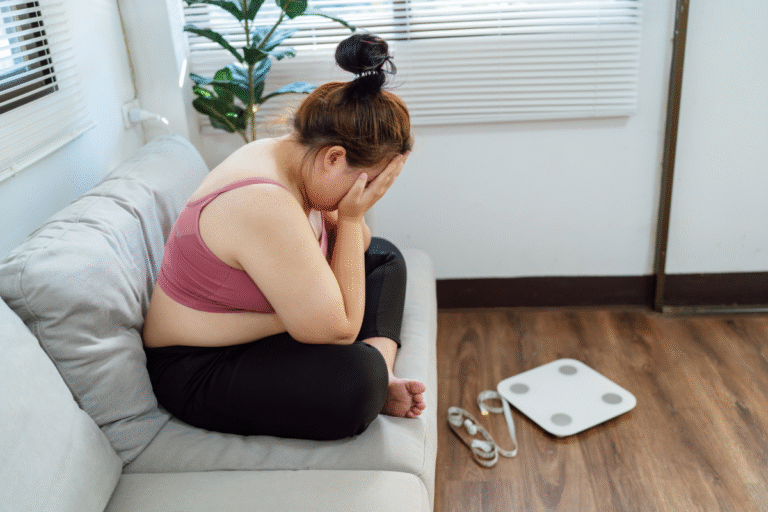
Anemia is a common condition, particularly in women during the perimenopausal and menopausal transitions. Among the various types, iron deficiency anemia is the most prevalent, especially as we age. During perimenopause, heavy or irregular menstrual cycles can exacerbate iron loss, and dietary changes or underlying health conditions may limit the body’s ability to replenish it. Addressing anemia is critical for restoring energy, vitality, and overall health.
—
What is Anemia?
Anemia occurs when the body lacks enough healthy red blood cells to carry adequate oxygen to tissues. This can result from various causes, but iron deficiency is the most common, particularly in women.
—
Signs and Symptoms of Anemia
The symptoms of anemia can range from mild to severe and often overlap with other conditions, making it important to confirm with testing. Common symptoms include:
- Fatigue or low energy
- Pale skin
- Shortness of breath, particularly with exertion
- Dizziness or lightheadedness
- Cold hands and feet
- Brittle nails or hair loss
- Cravings for non-nutritive substances like ice or dirt (pica)
- Brain fog or difficulty concentrating
—
Dietary and Lifestyle Changes to Help Alleviate Anemia
Addressing anemia begins with a well-rounded diet that supports iron intake and absorption.
Iron-Rich Foods
1. Heme Iron (easily absorbed): Found in animal products
- Red meat (beef, lamb)
- Poultry (chicken, turkey)
- Seafood (clams, oysters, sardines)
2. Non-Heme Iron: Found in plant-based foods
- Leafy greens (spinach, kale)
- Legumes (lentils, chickpeas)
- Nuts and seeds (pumpkin seeds, sunflower seeds)
- Fortified cereals and grains
Enhancing Iron Absorption with Vitamin C
Vitamin C significantly increases iron absorption. Pair iron-rich foods with:
- Citrus fruits (oranges, lemons, strawberries)
- Bell peppers
- Tomatoes
- Broccoli
Example Combinations:
Spinach salad with oranges and sunflower seeds
Lentil soup with a side of roasted red peppers
Beef stir-fry with broccoli and a squeeze of lemon
Lifestyle Tips
Avoid drinking tea or coffee with meals, as they contain tannins that inhibit iron absorption.
Reduce calcium supplements near meals high in iron, as calcium competes with iron absorption.
—
Lab Workup and Diagnostics for Anemia
A proper diagnosis requires thorough testing, including:
- Complete Blood Count (CBC): Evaluates red blood cell count, hemoglobin, and hematocrit.
- Iron Studies: Includes serum iron, ferritin (iron storage), and total iron-binding capacity (TIBC).
- Stool Testing for Occult Blood: Identifies hidden blood loss in the gastrointestinal tract, a potential cause of chronic anemia.
- Vitamin B12 and Folate Levels: These deficiencies can also cause anemia.
—
Treatment Options for Iron Deficiency
Treatment depends on the severity of the deficiency and the individual’s response to therapy:
1. Dietary Adjustments
- For mild anemia, increasing dietary iron may be sufficient.
2. Oral Iron Supplements
- Formulations vary widely in the amount of elemental iron provided. Common types include ferrous sulfate, ferrous gluconate, and ferrous fumarate.
- Raising hemoglobin by 1 unit typically requires 150–200 mg of elemental iron daily for 6–8 weeks.
3. Intravenous (IV) Iron
- For severe cases or those who cannot tolerate oral iron, IV iron provides a faster and more effective option.
Note: Iron supplementation should be monitored by a healthcare provider to prevent side effects like constipation and to ensure efficacy.
—
Case Study: A Path to Healing
A 48-year-old client came to Antigravity Wellness with fatigue, low energy, and additional symptoms such as low libido and weight gain around the belly. Initial lab work revealed mild anemia and low sex hormones, including estrogen, progesterone, and testosterone.
She was placed on a protocol that included dietary changes and hormone replacement therapy. Her sex hormones and some symptoms improved, but her fatigue persisted.
Upon reevaluation, her anemia had not resolved despite dietary efforts. A more aggressive approach was taken with oral iron supplementation, and over time, her hemoglobin levels improved. With proper monitoring, her energy returned, and her symptoms resolved. This highlights the importance of looking beyond the surface and diving deeper into lab results and medical history to find and address the root causes of symptoms.
—
Further Reading and Resources
The Iron Disorders Institute Guide to Anemia by Cheryl Garrison
Research Articles:
Iron Deficiency in Perimenopause
Dietary Enhancements for Iron Absorption
—
Anemia Testing and Treatment at Antigravity Wellness
At Antigravity Wellness, we provide comprehensive anemia testing and personalized treatment plans for women experiencing fatigue and other symptoms. Iron deficiency and anemia are common concerns in perimenopausal and menopausal women, and we are here to help.
If you believe you may be suffering from anemia, schedule a brief initial consult today. Our telemedicine practice serves women in Washington and Oregon, offering expert guidance to help you feel your best.




